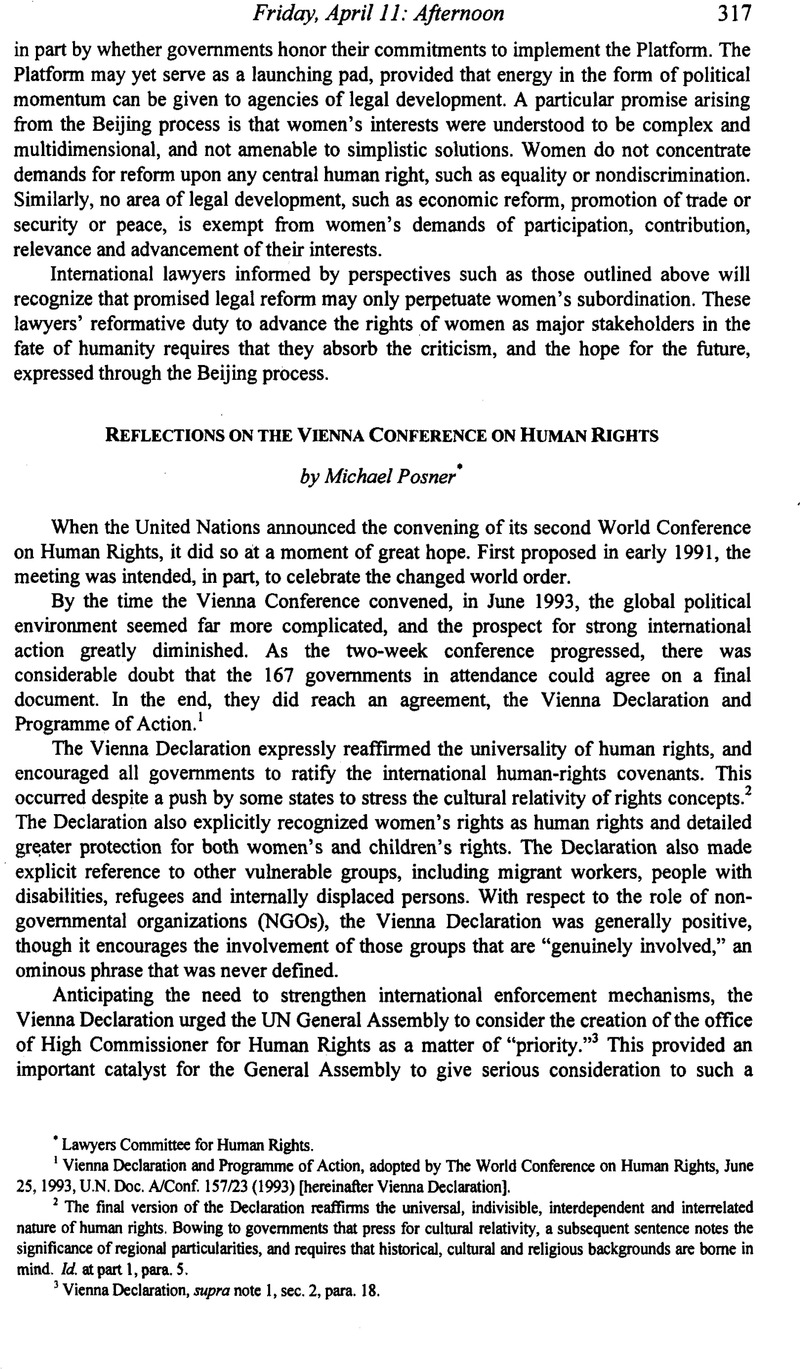Published online by Cambridge University Press: 28 February 2017

1 I Philippe Sands, Principles of International Environmental Law 25 (1994).
2 UNCED was formally proposed in December 1989 by the UN General Assembly Resolution 44/228, and after four preparatory negotiating sessions, some 176 states, several dozen international institutions and several thousand nongovernmental organizations (NGOs) converged on Rio de Janeiro for two weeks in June 1992.
3 Rio Delaration on Environment and Development, June 13, 1992, 31 I.L.M. 876 (1992).
4 Non-Legally Binding Authoritative Statement of Principles for a Global Consensus on the Management, Conservation and Sustainable Development of All Types of Forests, June 13, 1992, 31 I.L.M. 882 (1992).
5 Report of the United Nations Conference on Environment and Development, Vol. I, Resolution 1, Resolutions Adopted by the Conference, U.N. Sales No. E.93.18 and corrigendum, Annex I (1992).
6 Convention on Biological Diversity, June 5, 1992, 31 I.L.M. 822 (1992) [hereinafter CBD].
7 United Nations Framework Convention on Climate Change, May 9, 1992, 31 I.L.M. 851 (1992).
8 The CBD entered into force upon the thirtieth ratification on December 29 1993. As of April 1997, 164 countries and the European Union have ratified the CBD and an additional eighteen countries have signed it. On December 29, 1994, the UN General Assembly declared December 29, the date of entry into force of the convention, International Day for Biological Diversity.
9 SANDS, supra note 1, at 204.
10 CBD, supra note 6, arts. 1, 15(7).
11 SANDS, supra note 1, at 217.
12 See, e.g., CBD, supra note 6, arts. 16(2, 3), 17(1), 18(2), 19(1, 2), & 20(1, 2, 3).
13 See U.N. Doc. UNEP/Bio.Div./WG.2/l/4/Add.l, at 7, for India’s argument that the special situation of developing countries necessitated such a distinction.
14 CBD, supra note 6, art. 16.
15 Id. art. 19(2).
16 Id. art. 18(1).
17 Id art. 20(2); GEF Instrument para. 2.
18 CBD, supra note 6, arts. 1, 15(7).
19 Id. arts 12, 13.
20 Id. art. 23(5).
21 Ponoce-Nova, Diana, Capacity-Building in Environmental Law and Sustainable Development, in Sustainable Development and International Law 131 (Lang, Winfried ed., 1995)Google Scholar.
22 CBD, supra note 6, art. 23.
23 Id. art. 24.
24 Id. art. 25(1).
25 Id. art. 26.
26 Paper presented by Ibrahim F. Shihata before the Expert Meeting on Implementation and Compliance with International Environmental Agreements, Washington, D.C., May 20-21, 1996.
27 Held in Nassau, the Bahamas, November 28-December 9, 1994.
28 Held in Jakarta, Indonesia, November 6-19, 1995.
29 Report of the Second Meeting of the Conference of the Parties, U.N. Doc. UNEP/CBD/COP/2/19.
30 The SBSTTA held its first meeting in Paris in September 1995.
31 Held in Montreal, September 2-6, 1996.
32 SBSTTA2 Report, UN. Doc. UNEP/CBD/COP/3/3.
33 Decision II/7 of the COP and Recommendation 1/5 of the SBSTTA, U.N. Doc. UNEP/CBD/COP/2/19.
34 At the third COP meeting, it was decided that the fourth meeting would be held in May 1998; consequently, the national reports are to be submitted by the end of 1997.
35 COP paper on incentives—U.N. Doc. UNEP/CBD/COP/3/24 and COP3 decision III/18, U.N. Doc. UNEP/CBD/COP/3/38.
36 A pilot phase of the mechanism has duly been established pursuant to decision 1/3 and II/3 of the COP.
37 CBD, supra note 6, art. 19.
38 COP2 Decision II/5, U.N. Doc. UNEP/CBD/COP/2/19-Decision II/5.
39 The first meeting of the biosafety working group was held July 22-26, 1996, in Arhus, Denmark. The second and third meetings were scheduled to be held in Montreal May 12-16, 1997. For report of meeting, see U.N. Doc. UNEP/CBD/BSWG/2/14.
40 Weiss, Edith Brown, International Environmental Law: Contemporary Issues and the Emergence of a New WorldOrder, 81 Geo. L. J. 709 (1993)Google Scholar.
41 Edith Brown Weiss, Strategies for Compliance (May 20-21, 1996) (unpublished workshop paper presented at UNEP/Georgetown University Law Center).